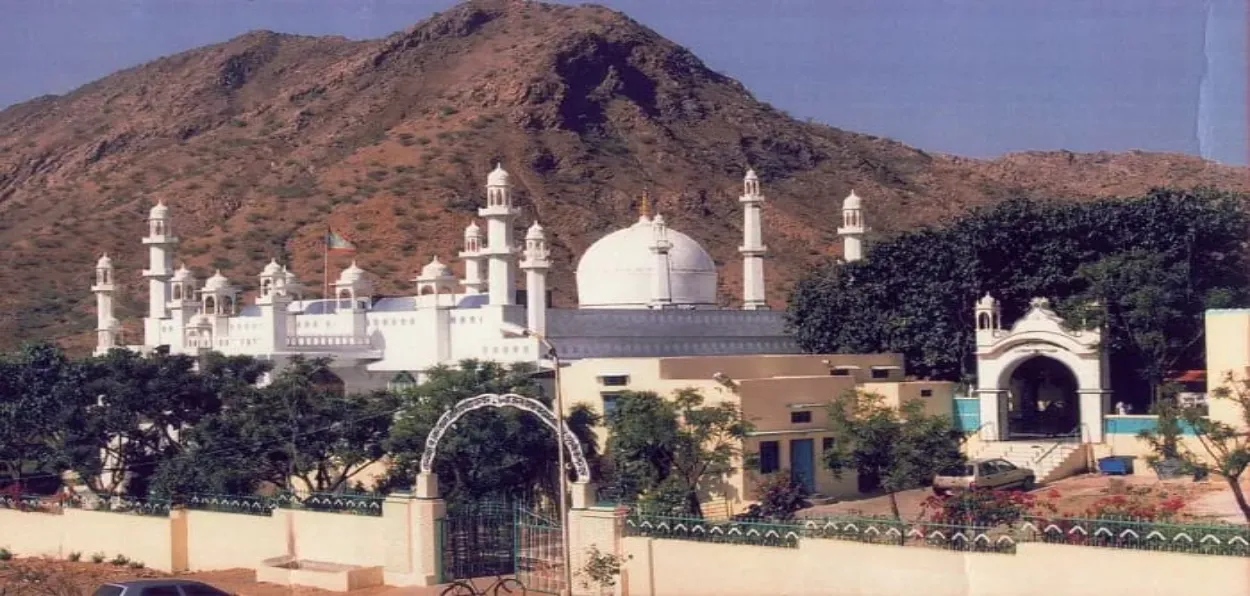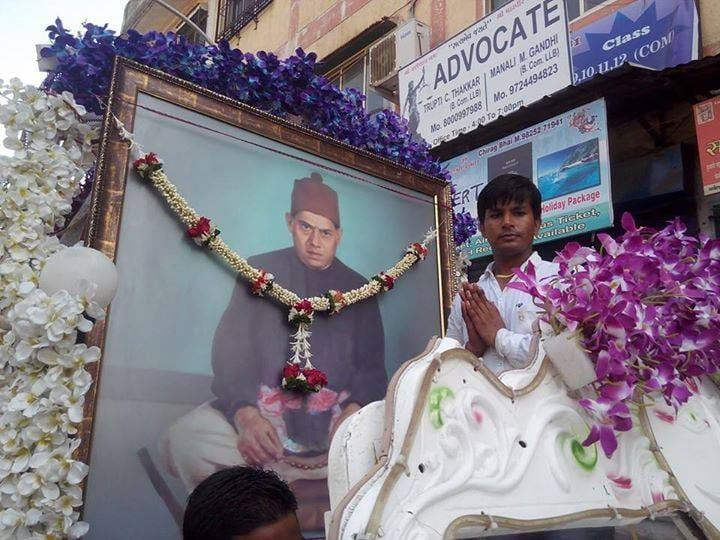Shujaat Ali Quadri
The seven-decade-old shrine of a Muslim Sufi saint Hazrat Sayed Baba Badam Shah in Ajmer's Somalpur village houses a temple and a mosque for the people of both religions to pray. Every day, the aarti is performed in the Shiv temple, followed by the Azan at the adjoining mosque. The Sufi saint never discriminated against his followers who were from different faiths. He built the temple and the mosque for them by seeking donations from people of all faiths
.
The Sufi was also known as Sat Guru 108 and Shri Hazrat Sayed Baba Badam Shah Uvasiya.
The shrine's Gaddi Nashin (Heir apparent) Ram Mishra has been taking care of the sanctum sanctorum ever since his father Hari Prasad 'Uvasiya' passed away in 2008. Hari Prasad was bestowed the title of 'Kalandar' by the Saint for his higher level of spiritual awakening.
The Sufi had come to Ajmer from village Galib in UP's Mainpuri district at the age of 14 in search of a guru. He spent a year at the Shrine of Khwaja Gharib Nawaz in Ajmer, Rajasthan, before settling down at Somalpur.
The Mishra family, which now has around 50 members, came in contact with the Sufi saint five years before he died on November 26, 1965.
The saint, during his last days, declared Hari Prasad Mishra his successor. Hari Prasad was so intensely in love with his Guru that he declared that he should be buried as per the Islamic rites.
Gaddinashin Ram Mishra in fronof the picture of his father
A devotee at the shrine of Sayed Baba Badam ShahHis grave in the same village is equally revered by the devotees visiting the shrine.
The Sufi saint had authorized the Mishra family to perform all ceremonies in the Dargah in Islamic ways
This is the eighth dargah of the Sufi Uwaisiya order in India. The remaining five are in Rampur and two are in Jhansi.
Made of white marble, The dargah built was built by Harprasad Mishra Uwaisi.
Mishra, who meditated under the guidance of his Guru became the successor of Badamshah Uwais Kalandar and served in this Idgah.
The tomb resembles the Taj Mahal sitting and has a Mehfilkhana, a mosque in the hallway, and a Shiva temple in the other corner.
The effect of this all-religion-consciousness is that ninety percent of the pilgrims who come here are Hindus.
The first surprise here for the fanatics is that here a Brahmin is honored with the post of Guru. The second surprise is that there is a Shiva temple in the dargah and the third surprise is that most of the pilgrims who come here belong to the Hindu community.
Whereas in the Uvaisi series, the formula is the same – Tatvamasi means God is in you only, means Hindu, Muslim, and Brahmin Shudra, etc. see God in all. This is the truth and this truth is visible in the Dargah of Badamshah.
This is the spirit that beats here. Babasaheb also used to explain that while imbibing this truth, remain engrossed in the meditation of your Guru, and be engrossed in that feeling. This is the means through which worldly and supernatural welfare is possible.
The construction work of the Dargah was completed in three years from April 1996 to 1999. After this, in the year 2005, the beautification of Mehfilkhane and Dargah was done. In 2008, the approach road was widened and asphalted again. The parking lot before the main gate of the dargah was also widened.
There is a Shiva temple in this dargah. Baba Badamshah himself had brought the Pindi of Shivling. The spiritual spectacle here during the annual Urs is unforgettable.
This Dargah is the embodiment of the simplicity of Sufi consciousness.
His annual Urs is celebrated on the 29th or 30th of Rajab month and on one Shabban as the Baba had left this world on 26 November 1965.
Hundreds of people from Ajmer participate in this annual Urs. In those days, the mixed scene of devotion, faith, qawwali, bhajan, etc. is created here, as if the light of God's mercy showers on those who drown in it.
It is said that the full name of the first Sufi saint of this series is Hazrat Uwais Karni Radiyallah Anhi. In childhood, his mother used to call him Usais and he was born in Karan Nayak village in Yemen.
(The Author is Chairman of Muslim Students Organisation)


